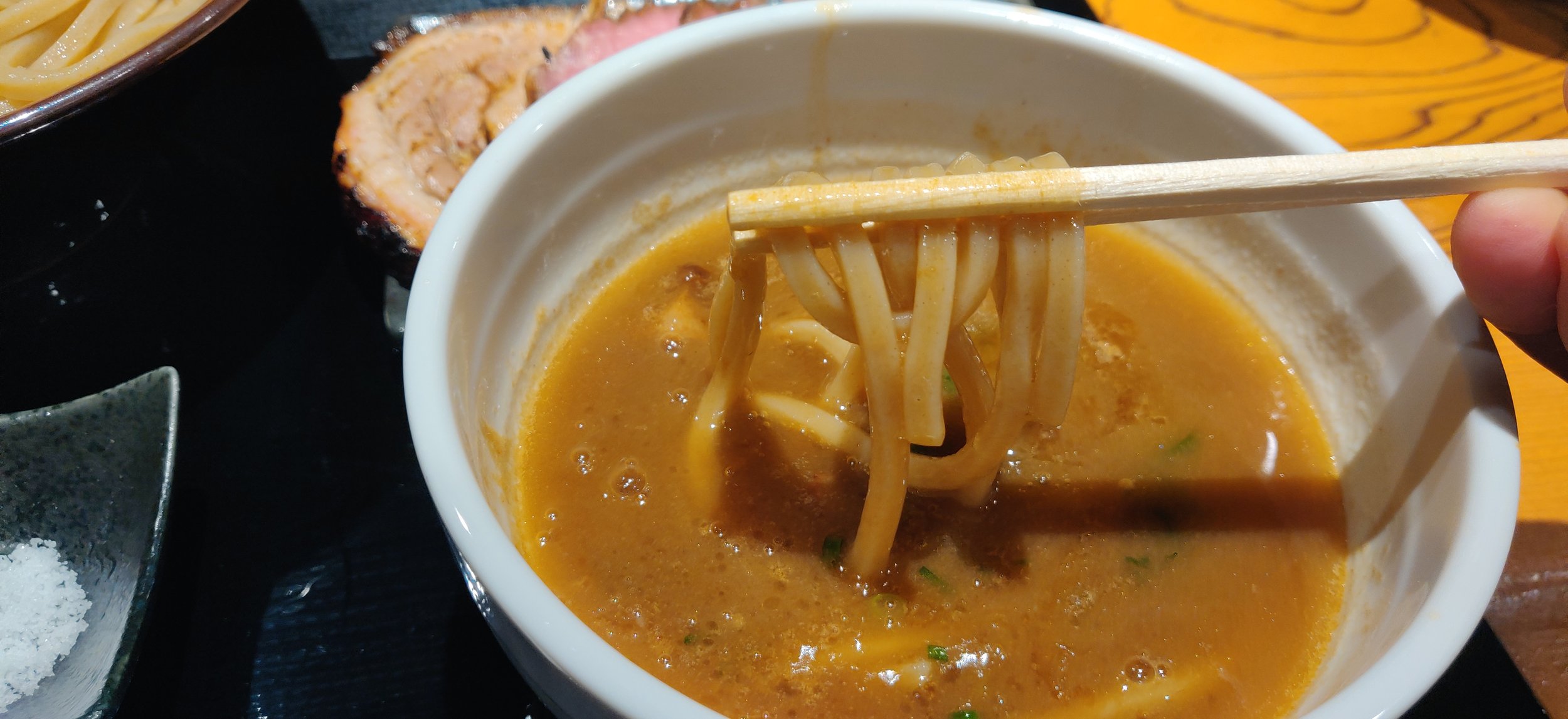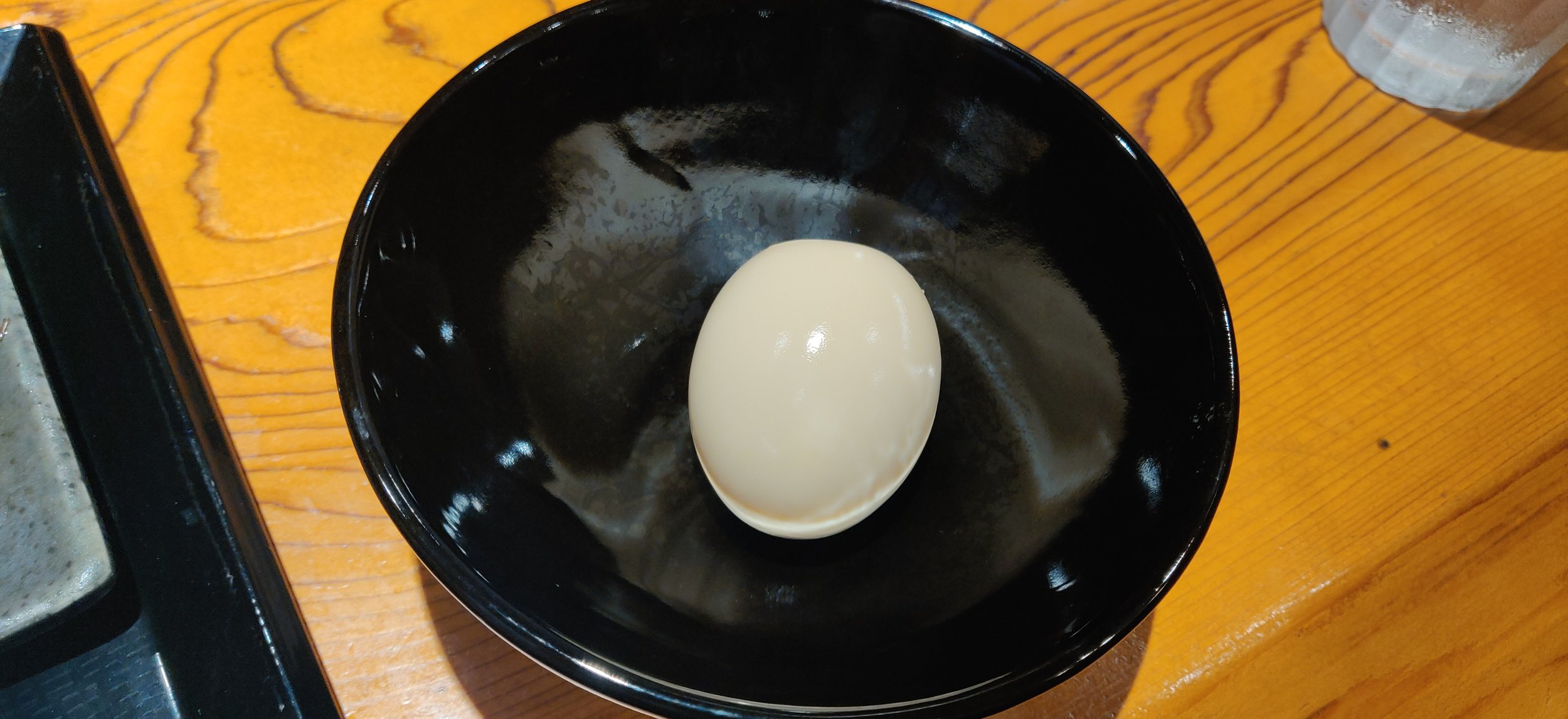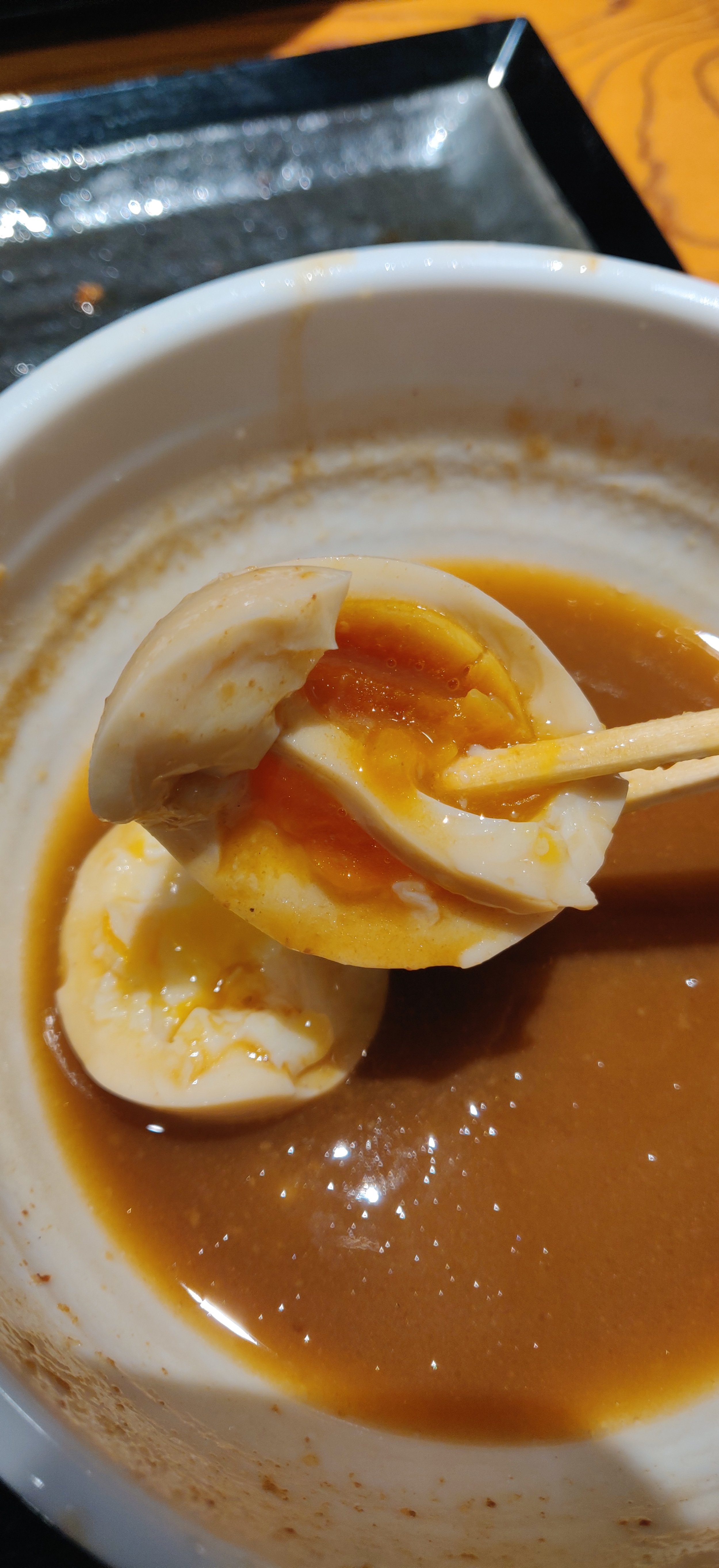Chuka Soba Hirai (中華蕎麦ひら井): The Jiro Apprentice Turned Tsukemen Master; Kita-Fuchu, Tokyo
I’m probably not alone in thinking Chuka Soba Hirai was one of the best ramen shops to open in 2021 and while their Tsukemen is unbelievably delicious, the background behind this shop is even more fascinating. It was too good not to share so here is my incredibly outdated review of Hirai and how this amazing ramen shop came to be. Hirai is the culmination of years of experience in the ramen industry, not just in shops, but also in noodle producing with the shop’s master having worked at both a Ramen Jiro and a popular noodle producer before opening his first shop here in May, 2021. Chuka Soba Hirai was born out of sheer love for ramen, particularly noodles, and the master serves up his dream ramen from his outpost here between Kokubunji and Fuchu stations.
So interestingly enough, the name Hirai comes from the master’s nickname, not his actual name, which he got from former colleagues due to his stark similarity to popular Japanese singer, Hirai Ken. I’m not gonna lie, when I read about this and went to the shop to see the master behind the counter, I couldn’t hold my laughter as they seriously look like carbon copies. Anyways, Hirai, despite opening during the peak of the pandemic, drew massive lines as word got out that a former Ramen Jiro employee was opening a non Jiro ramen shop. Pretty rare for ramen master to go this route as most former Jiro employees end up opening a Jiro or a Jiro style shop, but after working at a noodle producer and he started making different styles of noodles, the master found an appreciation for other ramen styles and he wanted to make a dish that would showcase his handcraft beauties. The noodles the master serves are thick with an incredibly fragrant wheat flour aroma. In order to let these strands shine, the master realized he needed a rich and creamy soup to pair, so taking from his experience working in pork at Ramen Jiro, he ended up making a 100% pork bone soup to serve alongside it.
Unfortunately no English menus at Hirai so I’ll go ahead and briefly translate it for you here. First row is the “Nami” or medium size noodle portion and from the left to right are the Chashu Tsuke Soba (Tsukemen with extra pork), Tsuke Soba (regular Tsukemen), Chashu Chuka Soba (Ramen with extra pork), and Chuka Soba (regular Ramen). Second row is the “Dai”, or large option alongside the corresponding ramen type (match the colors), and “Tokudai” or extra large for the two tsukemen options. Third row is the toppings of Ajitama soft boiled egg, chashu, menma, white rice, and a chashu over rice side. Fourth row is Negi and Nori dried seaweed and below that is a Miso Tsuke Soba in varying noodle amounts. Below in red is the spicy version of the Tsuke Soba in varying noodle amounts and the final row is “Shirunashi” or soup-less. Order for the day was the Chashu Tsuke Soba with medium noodle portion.
Even for a medium, this is a pretty hefty portion and they don’t skimp on the toppings either. 1300 yen isn’t necessarily cheap for ramen, but I definitely felt like I got my money’s worth, and at a highly regarded shop at that. I got three different pork chashu varieties, ajitama on the side, and a bit of citrus & salt to go along with the noodles and soup. The regular tsukemen comes without any pork so be sure to order this one if you want the full array of toppings.
So I should probably start with the noodles, but figured I’d save that and go with the soup first as this review might get wordy if I don’t. Made up of 100% pork, the master falls back to his Jiro roots to get the most out of this rather simple ingredient. Tonkotsu, or pork bone, can go in a variety of different directions. In terms of light Tonkotsu broths, you can have an incredibly transparent, airy soups like a Rai Rai, or a low emulsification, oily soup such as a Jiro. For richer soups, Hakata style ramen uses a heavily emulsified pork bone broth as well as a number of Tsukemen shops which specializes in Tonkotsu Gyokai. Hirai goes with that traditional Tsukemen creamy soup mindset, but rather than adding dried fish, he does an amazing job of bringing out flavors from just the pork creating a salivating, savory flavor profile that’s hard to put down. It’s a bit out of the ordinary to create a rich soup like this one without adding something like Niboshi (dried sardines) or Katsuobushi (dried bonito) as it helps amp up both the flavor and umami, but it’s honestly perfect as is getting those notes from his Shoyu tare that really accentuate the porkiness of this broth. The creamy consistency gives the noodles a perfect sheen coating as you dip them in and it’s everything you could ask for in a Tsukemen.
Speaking of which, the main attraction…the noodles. I mean this is as close to perfection as you can get with this style and you can enjoy them in so many different ways. First take a couple strands and slurp them as is. The wheat flour aroma really comes through and it’s quite frankly, ridiculous that it tastes this good without even dipping them in the soup. Next give it a pinch of salt and you’ll be able to taste a hint of sweetness from the flour…kind of the same sensation as putting salt on watermelon. As good as that was, next up is the sudachi lime which provides some acidity to give it a refreshing kick and brighten up that palette.
Finally take some strands and give them a dip in to the delicious soup. Peep the coating which is phenomenal and just encapsulates the strands in it’s deliciousness. Thickness of the strands is the perfect compliment to the soup…or maybe it’s the other way around where this creamy soup helps balance the dense noodles…whatever the case it’s delicious and I’m all for it. I do wish I got a larger serving size because my mouth never wanted this meal to end, but my stomach was definitely glad I opted for the medium because it does fill you up quickly.
Finally the toppings which Hirai serves on the side. Chashu rolled pork belly, pork loin, and braised shoulder was plated beautifully alongside the soup & noodles and I loved how each had a unique flavor to them. The fat of the belly was melting in-between my chopsticks and was as decadent as can be. Smokiness of the outer ring was top notch and was good as is and with the soup. Loin was a bit tougher than I usually like, but was a nice texture balance overall with the softer belly and shoulder alongside it. Shoulder was probably my favorite as it was the median of the three varieties. Shoyu char on the outside was orgasmic and the texture was the right ratio of meaty and fall of the bone.
In addition to the chashu I also had some thick cut menma and a soft boiled egg. Thicker cut for the menma was a good choice for this soup as anything thinner probably would have drowned in the flavor bomb that is this meal. Soft boiled egg seems excessive, but it was a neutral flavor that I thought worked quite well with this soup. Not pictures is the green onions which I thought gave the meal a nice herbaceous breather in between slurps of the noodles. Overall the toppings were really well executed and I absolutely recommend grabbing them if you make a visit.
Not much more to say, but go! I understand the shop is a bit of a trek for most who are probably staying/living out towards central Tokyo, but I think Hirai was well worth the time investment to visit. You won’t regret it, I promise.









